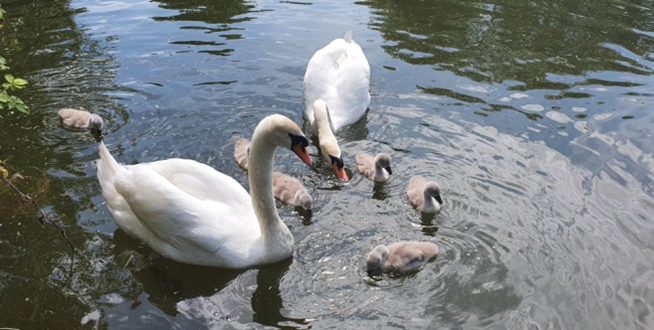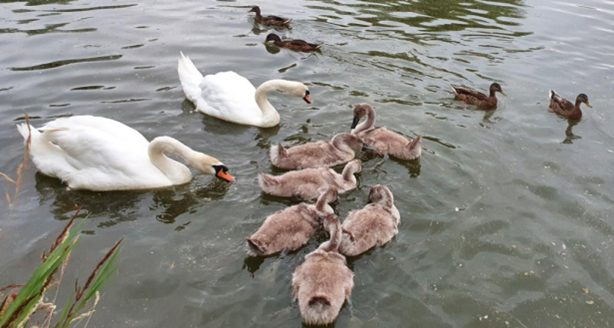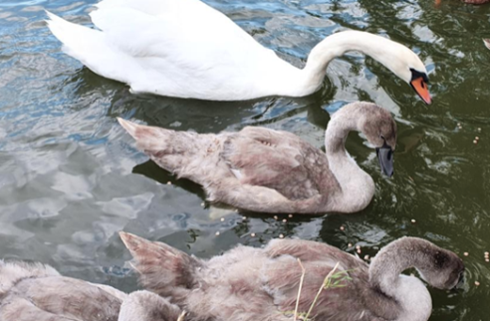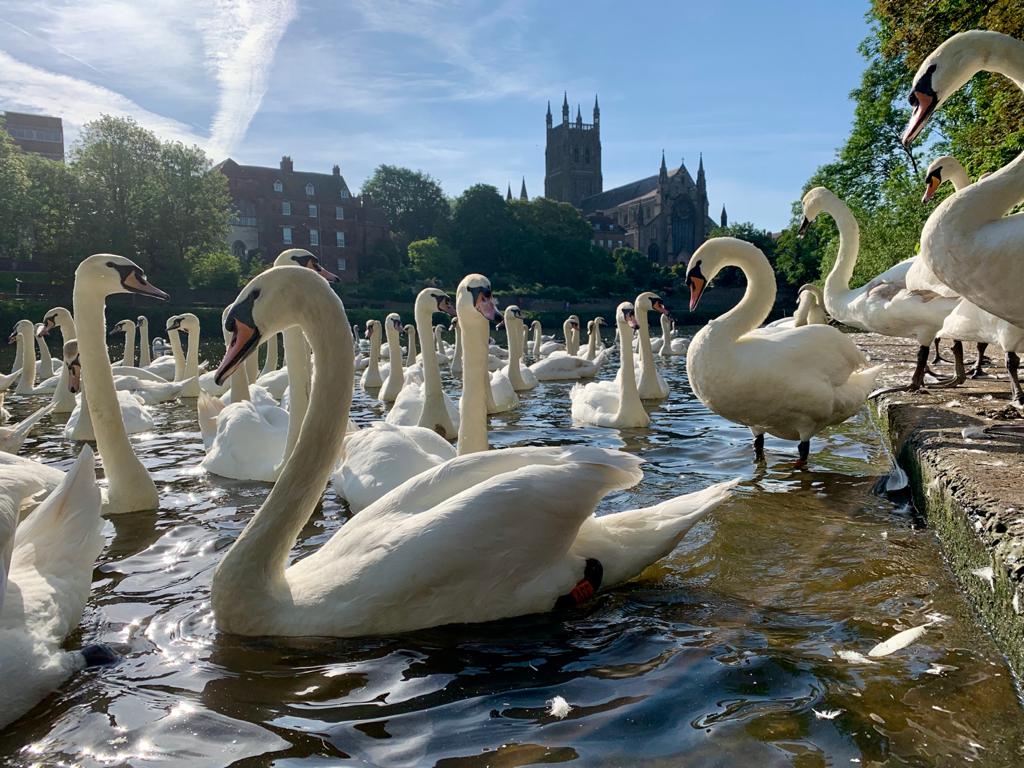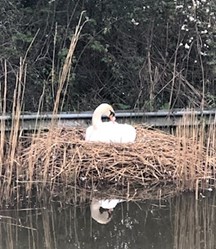
Mature swan pairs choose quiet places to nest in spring, defending them against other swans, so few pairs nest along the busy Severn in Worcester. If they do, nests are often washed away if the river rises; if they survive, cygnets are at great risk from predators and the harsh conditions of the open river.
Most families live on lakes, ponds and canals away from the river. The cob starts to build the nest, which is finished by the cob (female). In ideal conditions it’s a large mound, with a hollow for the eggs.
The pen lays an egg every two days until her clutch is complete. Then she sits for 35 days. She needs less energy, sitting all day, so she feeds only now and again. She sleeps much of the time. Meanwhile, the cob patrols the territory, keeping it safe for his family.
Cygnets hatch within a day or two of each other. Once dry, they’re ready for the water. They still need to get out to dry off, otherwise they become chilled and drown. The cosiest place to warm up is on a parent’s back. Cygnets have an instinct to climb, and can scramble up easily if the adult lowers its tail a little.
Parents pull up weed for their cygnets, if they are lucky enough to have it. They also paddle their feet to stir titbits to the surface, but cygnets feed themselves from the start. They cheep constantly to stay close together for safety – the more adventurous cygnets are the ones most likely to be taken by predators. For the next six to nine months the adults will teach the youngsters how to be swans and look after themselves.
Cygnets at a few weeks, two months and three months old. Growing quickly, some are ready to leave home come autumn.
